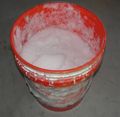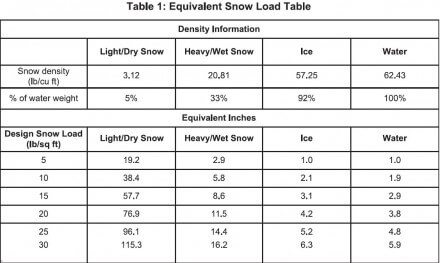The recent snow fall has caused major problems with roof leaks from ice dams, and there have been a number of roof collapses or failures at commercial buildings in Minnesota and Wisconsin over the past week, including the Miller Hill Mall in Duluth and a Kmart in Eau Claire.
Naturally, homeowners are starting to get concerned about how much snow their roof can hold. The video clip below from a 2011 Allstate commercial gives a nice image of what this might look like.
The required roof snow loads for Minnesota aren’t clearly spelled out anywhere, but the numbers can be found by using Table R301.2(1) of the Minnesota Administrative Rules. This table says that roof snow loads equal .7 times the ground snow load. To find the ground snow load, we use section 1303.1700 of the Minnesota Administrative Rules. The southern portion of Minnesota, which includes the Twin Cities metro area, uses a ground snow load of 50 pounds per square foot.
For the Twin Cities metro area, the roof snow load equals 35 pounds per square foot, or .7 x 50.  So how much snow does this equal? It depends. As everyone knows, cold fluffy snow is very light, while wet snow can be extremely heavy. The chart below, courtesy of Paul Schimnowski, P.E., gives some examples of snow loads.
So how much snow does this equal? It depends. As everyone knows, cold fluffy snow is very light, while wet snow can be extremely heavy. The chart below, courtesy of Paul Schimnowski, P.E., gives some examples of snow loads.
Last Wednesday, just before the most recently dump of snow that we received, I checked a section of undisturbed snow in my back yard to see what it weighed; 1/2 of a cubic foot was about 10 pounds. The depth of the snow varied between 14″ and 20″, so to make the math easy, lets say it was 18″. That would make the snow weigh about 30 lbs / sf.
If you have a properly constructed roof, you shouldn’t have to worry about your roof collapsing because the snow on a sloped roof won’t be as deep as snow on the ground. Snow drifts are the result of light, fluffy snow blowing around; not heavy wet snow. Also, the 35 pounds per square foot requirement is only a minimum requirement.
So why did these commercial roofs collapse? They were dealing with snow drifts on flat roofs, and on a much larger scale. According to Jepsen Inc, the engineering firm that shored up the collapsed Kmart roof, some of the snow drifts were nearly eight feet high, as shown in the photo below.
On the other hand, if you know you have structural problems with your roof and you get some huge snow drifts, it wouldn’t hurt to have some snow removed from your roof.
Here’s a short video clip where I spoke with WCCO news earlier this year about roof snow loads, saying not to worry (yet).



chris
March 22, 2011, 3:18 pm
Commercial buildings often include a Deflection Monitoring System to alert managers to developing snow loads. Snow density and accumulation amounts vary across the roof.
But, by measuring for deflection you are able know when and where action is needed – with out climbing onto the roof to measure snow density and drift heights.
Bill
February 25, 2014, 8:48 am
“For the Twin Cities metro area, the ground snow load equals 35 pounds per square foot, or .7 x 50.”
Shouldn’t this be the roof snow load?
Reuben Saltzman
February 25, 2014, 12:43 pm
@Bill – yes, it certainly should be. Thanks for pointing that out; I’m going to fix it right now.